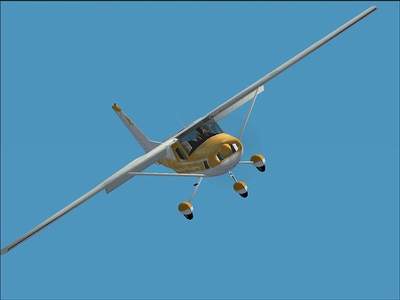Sat, Oct 10, 2009
Move Follows An Incident Involving A Canadian Cessna 152
 The FAA has issued a Special Airworthiness Information
Bulletin (SAIB) to address an airworthiness concern regarding
emergency checklist procedures that apply to ventilating smoke and
fumes from the airplane cockpit in GA aircraft. It was not
previously required to include this procedure into the checklists
addressing that situation.
The FAA has issued a Special Airworthiness Information
Bulletin (SAIB) to address an airworthiness concern regarding
emergency checklist procedures that apply to ventilating smoke and
fumes from the airplane cockpit in GA aircraft. It was not
previously required to include this procedure into the checklists
addressing that situation.
After an in-flight electrical fire in a Canadian-registered
Cessna 152 , the Transportation Safety Board of Canada recommended
that the “FAA take action to review checklist procedures
dealing with smoke and fire in GA aircraft,” and include
additional steps to eliminate smoke or fumes. Emergency checklist
procedures for certain aircraft did not address ventilating smoke
and fumes from the airplane cockpit.
The current FAR requires OEMs to include instructions in their
pilot operating handbook (POH) or airplane flight manual (AFM) to
remove smoke from the cockpit and passenger cabin of both
pressurized and un-pressurized aircraft. Specifically:
- “Each passenger and crew compartment must be suitably
ventilated…”
- “If accumulation of hazardous quantities of smoke in the
cockpit area is reasonably probable, smoke evacuation must be
readily accomplished starting with full pressurization and without
depressurizing beyond safe limits.”
- “For all airplanes, information concerning normal,
abnormal (if applicable), and emergency procedures and other
pertinent information necessary for safe operation and the
achievement of the scheduled performance must be
furnished…”

The FAA says owners and operators may have modified their
aircraft to meet operational requirements or added/removed
supplemental type certificates (STC). These alterations could
require changes to the original POH or AFM and associated emergency
checklist or abnormal procedures checklist.
The FAA recommends the following:
- Owners and operators check their added/removed STC instructions
for continued airworthiness for the removal of smoke and fumes
against the OEM issued Emergency Checklist.
- If the OEM Emergency Checklist has no instructions for the
removal of smoke or fumes in the cockpit, then owners and operators
contact the OEM of the make and model airplane for emergency
checklist instruction or additions.
- OEMs add to the emergency checklist steps for ventilating smoke
and fumes from the cockpit for their specific make and model. OEMs
may have to issue service bulletins instructing owners and
operators where and what to write into the emergency checklist or
issue a new emergency checklist that contains instructions for the
removal of smoke and fumes from the cockpit.
The airworthiness concern is not an unsafe condition that would
warrant an AD.
More News
Aero Linx: Transport Canada We are a federal institution, leading the Transport Canada portfolio and working with our partners. Transport Canada is responsible for transportation p>[...]
Gross Navigation Error (GNE) A lateral deviation from a cleared track, normally in excess of 25 Nautical Miles (NM). More stringent standards (for example, 10NM in some parts of th>[...]
From AirVenture 2017 (YouTube Edition): Flight-Proven Booster On Display At AirVenture… EAA AirVenture Oshkosh is known primarily as a celebration of experimental and amateu>[...]
Aircraft Parachute System (CAPS) Was Deployed About 293 Ft Above Ground Level, Which Was Too Low To Allow For Full Deployment Of The Parachute System Analysis: The day before the a>[...]
Also: 48th Annual Air Race Classic, Hot Air Balloon Fire, FAA v Banning 100LL, Complete Remote Pilot The news Piper PA-18 Super Cub owners have been waiting for has finally arrived>[...]
 ANN's Daily Aero-Linx (06.29.25)
ANN's Daily Aero-Linx (06.29.25) ANN's Daily Aero-Term (06.29.25): Gross Navigation Error (GNE)
ANN's Daily Aero-Term (06.29.25): Gross Navigation Error (GNE) Classic Aero-TV: Anticipating Futurespace - Blue Origin Visits Airventure 2017
Classic Aero-TV: Anticipating Futurespace - Blue Origin Visits Airventure 2017 NTSB Final Report: Cirrus SR22
NTSB Final Report: Cirrus SR22 Airborne Affordable Flyers 06.26.25: PA18 Upgrades, Delta Force, Rhinebeck
Airborne Affordable Flyers 06.26.25: PA18 Upgrades, Delta Force, Rhinebeck




